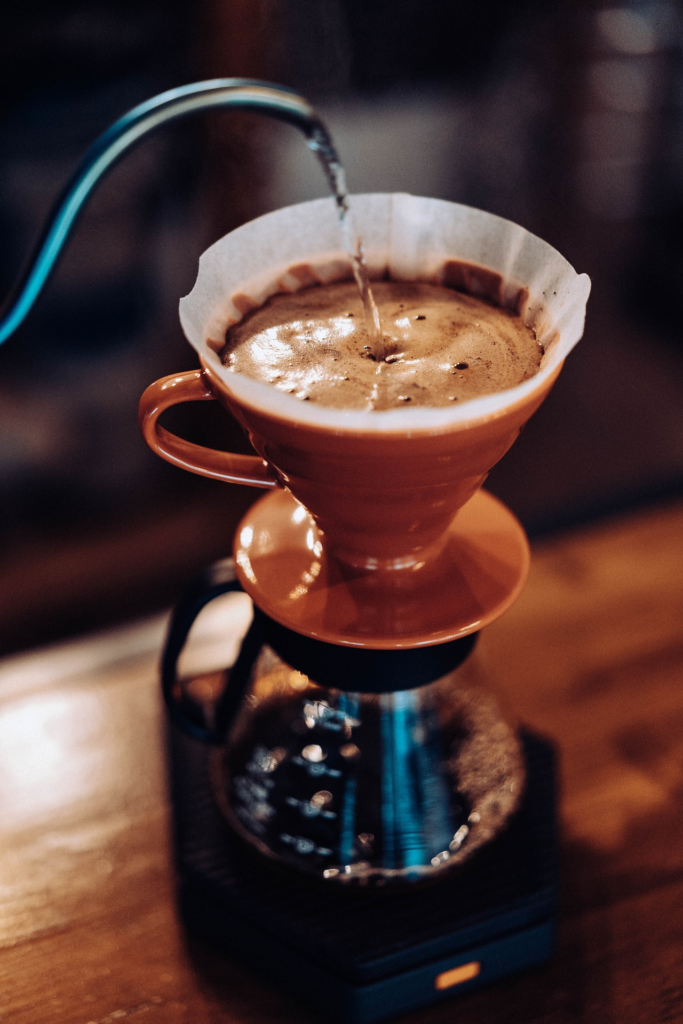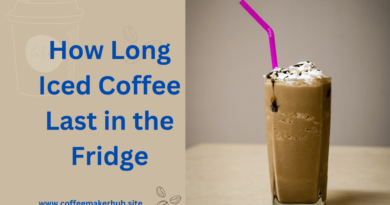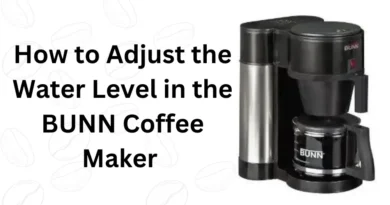Cone vs. Flat Coffee Filters – Which Works the Best?
Although it may seem inconsequential, the coffee filter you choose can have a significant impact on the final product. Choosing between a Cone and a Flat coffee filter is about more than aesthetics; it’s also actually about extracting maximum flavor from your coffee beans.
In this blog, we’ll look into the specifics of each filter type, weighing their pros and cons to help you pick the one that’s best for your brewing preferences. Because these small paper creature coffee filters can make or break your morning coffee.
Are you ready to unwind? Join us on this virtual journey. But before digging deep, here’s a chart of differences between cone and flat filters for quick analysis.
| Criteria | Cone Coffee Filter | Flat Coffee Filter |
|---|---|---|
| Shape | Cone-shaped | Flat |
| Filter Material | Paper or metal | Paper only |
| Brew Time | Faster brew time | Slower brew time |
| Brew Strength | Can produce a stronger brew | Produces a milder brew |
| Compatibility | Designed for cone-shaped coffee makers (e.g., pour-over) | Designed for flat-bottomed coffee makers (e.g., drip coffee) |
| Extraction Efficiency | Allows better water flow and extraction | May have slightly lower extraction efficiency |
| Ease of Use | Easy to handle and dispose of | Can be trickier to handle and dispose of |
| Price | Typically affordable | Generally more expensive |
Cone Coffee Filters
Cone coffee filters, as the name suggests, feature a conical shape. This design sets them apart from their counterparts. The taped structure narrows down towards the bottom, where the coffee drips into your cup or carafe.

But what are the benefits? Let’s get to know them!
1. Better Extraction Due to the Tapered Shape
The conical shape is crucial for optimizing coffee extraction. The shape promotes a more uniform interaction between water and coffee grounds, which facilitates complete extraction. This results in a coffee with a more robust flavor profile and a well-rounded taste.
2. Enhanced Flavor Clarity
With enhanced extraction, cone filters frequently produce a more refined and vivacious flavor profile. The tapered shape helps filter out undesirable sediments and oils, resulting in a cup that highlights the nuances and subtleties of the coffee.
3. Efficient Water Flow
The gradual narrowing of the filter permits optimal water passage through the grounds. This controlled flow rate ensures that water has sufficient time to interact with coffee, extracting flavors without over-extracting.
Along with the benefits, each type has its drawbacks.
Specificity to Cone-shaped Brewers
One disadvantage of cone filters is that they are only compatible with cone-shaped coffee machines. If you use multiple fermentation methods, you may find these filters to be less versatile.
Limited Filter Size Options
Cone filters are available in various sizes, but there may be fewer options than with flat filters. This limited selection may not be compatible with all cone brewers or meet your specific coffee-making requirements.
Flat Cone Filters
Flat coffee filters, unlike their conical counterparts, feature a straightforward, uniform shape. These filters lay flat and cover the entire bottom of your coffee maker.

How can they be beneficial for you?
1. Versatility with Various Brewers
The flat design of these filters makes them suitable for use with a variety of coffee machines. Flat filters can seamlessly adapt to a variety of brewing methods, including drip machines, AeroPress, and pour-over apparatuses.
2. Larger Filter Size Options
Typically, flat filters offer a broader range of sizes. This selection ensures that you can find the ideal filter size for your coffee maker, eliminating the possibility of a mismatch.
3. Wider Availability
Due to their prominence and compatibility, flat coffee filters tend to be more accessible. They are readily available in stores and online, making replenishment effortless.
What are the drawbacks of using this type of filter?
Potentially Slower Extraction
The uniform design of flat filters may result in slightly slower water passage through the coffee grounds. If not managed properly, this can extend the brewing time and potentially alter the flavor profile.
Reduced Flavour Clarity in Some Cases
While flat filters generally produce a clean cup of coffee, they might not filter out oils and fine particles as effectively as cone filters. This could result in a cup with less clarity in terms of flavor notes.
Other than that, let’s have a look at another important factor.
Water Flow Ratio
When it comes to making the ideal cup of coffee, a few elements come into play. The water flow ratio, or how much water interacts with the coffee grinds and how much remains in the pot, is an important consideration. This ratio changes depending on the type of coffee filter used.
Cone filters have a tapered design that allows for a slower and more uniform water flow. This careful speed guarantees that the wonderful flavors of the coffee beans are extracted effectively, resulting in a more delicious and well-rounded coffee experience.
Flat bottom filters, on the other hand, provide less control over water flow, which can result in either over- or under-extraction. This could result in coffee that is either too strong or too weak.
Finally, the filter you choose affects the delicate balance of water and coffee grounds, ultimately creating the flavor and taste of your cup.
Which type is best for you?
Cone filters are ideal for coffee drinkers who prefer precision and full-bodied flavors. Cone filters are your ally if you want a slower, more controlled brewing procedure that brings out nuanced flavor notes. They’re great for pour-over fans looking for a complex and flavorful coffee experience.
Flat filters, on the other hand, are ideal for those who appreciate simplicity and convenience. Flat filters are ideal if you enjoy the convenience of drip machines and want a consistent cup without delving into brewing complexities. They provide a straightforward, consistent brew, making them an excellent alternative for people seeking a hassle-free morning routine.
A Closing Note
At last, the choice between cone and flat coffee filters is a matter of taste and preference. Cone filters set the backdrop for delicate extractions and strong flavors, making them ideal for individuals who love delving into the complexities of coffee filters.
On the other hand, value simplicity and dependability, making mornings easier for individuals who seek convenience. Whether you choose the creative accuracy of cones or the effortless harmony of flats, your filter makes your coffee ritual distinctly yours.





The blog is amazingly written and it’s informative.